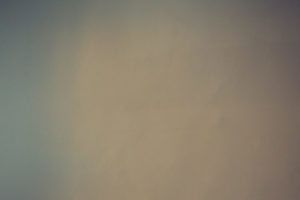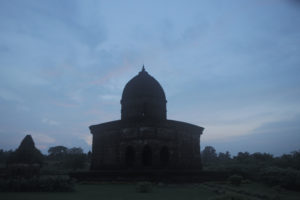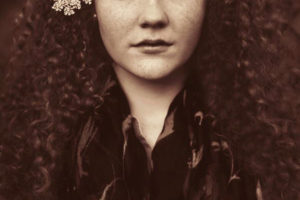
Bael harvested in Kolkata, India and the first experiment of a gum bichromate print using a sticky substance collected from the fruits.
WARNING: impassioned shop-talk ahead.
Last summer I attended part of a Patachitra workshop in a village of West Bengal. There, women painted scrolls with pigments made from leaves and flowers which were ground in coconut shells and mixed with a sticky liquid collected from pockets surrounding the seeds of a bael fruit. Each scroll tells a mythical story which they sing along with as visuals unfurl. It is a beautiful and fascinating tradition.
I was curious if the sticky substance could replace an ingredient in a 19th-century photographic process, called gum bichromate. An image forms when the primary chemical is combined with a water-soluble colloid (traditionally gum arabic, made from the sap of acacia trees) and becomes hardened by exposure to UV light. Any part of the image not exposed to light washes away in a series of water baths.
Was this substance a water-soluble colloid? Would there be an actinic reaction? Would the quality be just as high (or better) than gum arabic?
As luck would have it, while visiting a family home, my partner noticed that a neighboring tree was producing bael fruit. Everyone gathered on the terrace as the ends of fertile branches were collected one by one. I think the family was both amused and confused by my excitement, not able to visualize what it was I intended to do with these fruits. It took about two hours to collect what averaged to be just five milliliters of ooze per piece and I cherished every drop. It involved a massive knife whacking unripened fruits against tile flooring and slowly scooping goo from pea-sized pockets. I had to continuously wash my hands, as everything from dirt to hair to even the handle of the knife began sticking to my skin.
I kept this precious elixir in a travel-sized bottle of Listerine and it stayed in storage over several months as I continued to roam around the world. Only today, finally settled into a studio space in Maine, have I been able to experiment. And, it worked!
I exposed one image for ten minutes in a UV box on a single piece of paper which had the fruit-based emulsion on one side, and the traditional gum arabic emulsion on the other side. The bael fruit created a more viscous emulsion which coated the paper like satin. I used a cheap, non-archival paper that had been gelatinized over a year ago. I use this for experimentation when I don’t want to waste expensive European papers. A gently forced development was necessary for the bael, but with very delicate brushwork, it looked nearly identical to the opposite side.
Next up in the studio, I’ll dig into my bottles of plant-based pigments collected from India, and begin working with another process infused with sacred Ganga water which I collected from a distributary of the Ganges river. If you’re an alt-pro fanatic, visit my Journal again over the next few weeks for more updates.




Leave a Reply